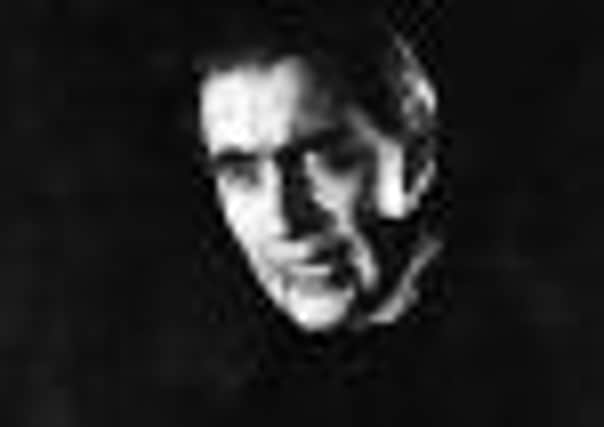Hammer’s rise from schlock to cult classics


The critic and commentator Kim Newman, in his 1988 book Nightmare Movies, makes a very important point about horror movies: yesterday’s trash is tomorrow’s treasure.
Newman puts it rather more eloquently than that, opining that it is what we see during our formative years that influences us and everything that follows is of a lower quality.
Advertisement
Hide AdAdvertisement
Hide AdCritics and historians such as Denis Gifford, William K Everson and Leslie Halliwell adored the films of Chaney, Karloff and Lugosi because they watched them as youngsters. Having to deal with the emergence of George (Night of the Living Dead) Romero, John (Halloween) Carpenter and Wes (Last House on the Left) Craven in the ’60s, ’70s and ’80s caused people like Halliwell enormous problems.
Writers in the ’80s and ’90s looked back fondly on Hammer’s output while a decade or more later new reviewers were re-evaluating the era of Romero, Carpenter and co and staking a claim for greatness.
And today?
We have reached a point where the ’80s video generation of filmmakers has begun to scale new heights of respectability. In another 20 – or even ten – years the cycle will begin again with the directors of today.
That club includes people like Newman and myself. He and others of our generation are now finding the shockers of the 1980s – splatter movies, stalk-and-slash chillers, video nasties and sundry schlock have become cult and classic.
Advertisement
Hide AdAdvertisement
Hide AdHammer films, starring Peter Cushing and Christopher Lee, emerged in the 1950s to howls of derision from the critical cognoscenti. Made on shoestring budgets by a production team that only looked to make a fast buck, they were production line pictures aimed at targeting current audience trends.
It’s well-known that Hammer chief James Carreras saw promise in a BBC serial, The Quatermass Experiment, and bought the movie rights. Hammer’s version, highlighting the ‘X’ certificate nature of the plot (it was advertised as ‘The Quatermass Xperiment’), was a huge hit and ploughed the field for the bloody, lurid crops to follow.
Hammer and Carreras made a bona fide movie star out of familiar TV face Peter Cushing. Carreras figured that audiences who enjoyed an actor on the box would just as likely enjoy him at the pictures. Cushing was cast as the Baron in The Curse of Frankenstein, Hammer’s adaptation of Mary Shelley’s novel.
One modestly-budgeted hit followed another – Christopher Lee was elevated to stardom when he played the Count in Dracula – and gave Hammer 20 years of success until a changing world and changing tastes sounded the death knell.
Advertisement
Hide AdAdvertisement
Hide AdHammer’s was a cottage industry that became a phenomenon. Home-grown talent, papier-mache make-up effects, a completely fictionalised milieu of muttering peasants, whispered dread and saturnine vampires versus ascetic scientists in the age-old battle of good versus evil – this was the world of Hammer.
Television re-runs in the ’80s and ’90s pumped new blood into the desiccated corpses in the Hammer crypt. By the mid-’90s London’s Barbican devoted an entire season to the adventures of Dracula, Frankenstein, Quatermass and their ilk. Somehow, over time, Hammer horrors had become cool. In truth they always were. A flurry of early gothics such as The Mummy, The Hound of the Baskervilles, The Brides of Dracula and The Revenge of Frankenstein inevitably gave way to lesser fare. But Hammer had a brand. If it fell out of fashion in the ’70s that was due to competition from the likes of The Exorcist and The Texas Chain Saw Massacre.
Times change. Yet the appeal of Hammer, its stars and its unique identity, is timeless. Their films were ground-breaking, fearless and censor-baiting, acted in barnstorming Shakespearian style by Cushing and Lee and occupy a place in the pantheon of British cinema.
Digital re-releases – such as director Terence Fisher’s The Curse of Frankenstein, playing at a convention in Leicester later this month – still have the power to set fans’ pulses racing. And with Quatermass and the Pit forming part of a touring Best of British retrospective, those glorious exercises in grand guignol act as a time capsule to a more innocent time.
Advertisement
Hide AdAdvertisement
Hide AdWho needs torture porn when one has Hammer horror? Or has this writer just slid into his own sticky trap? When it comes to Terence Fisher versus George Romero, this writer opts for Romero every time.
Still, Hammer boasts its own appeal. Christopher Lee remains the best Dracula the screen has ever seen. Icy Peter Cushing still wields a mean scalpel. And those fog-drenched Transylvanian graveyards with their bats, broken crosses and pallid lady vampires in diaphanous decaying shrouds still continue to send a nostalgic shiver up this fortysomething’s spine...
Hammer past and present
Hammer’s 1956 breakthrough movie The Curse of Frankenstein teamed Peter Cushing and Christopher Lee as maker and monster. The pair worked together in more than 20 films.
Cushing appeared as Baron Frankenstein in six Hammer films; Lee as Dracula in six.
Advertisement
Hide AdAdvertisement
Hide AdAs well as Frankenstein and Dracula, Hammer’s repertory of heroes and villains included Kharis the mummy, Professor Quatermass, Father Shandor, Sherlock Holmes and Captain Kronos.
Hammer enjoyed renewed success earlier this year with The Woman in Black, starring Daniel Radcliffe.